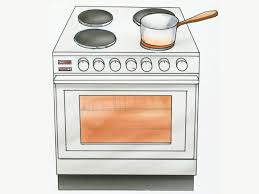Q: Help! I have recently purchased a convection oven and am unsure how to modify my recipes from conventional oven cooking.
A: Convection ovens have been around since the 1950s and were first used in professional kitchens before they made it to the home. Though pricier than conventional ovens, convection ovens have their many benefits. Conventional ovens (sometimes called radiant or thermal ovens) cook food by filling the interior cavity of the oven with hot air. With convection ovens, a fan is placed inside the oven to circulate the air. When hot air is blowing onto food, as opposed to merely surrounding it, the food tends to cook more quickly. A short version of the scientific explanation for this is that moving air speeds up the rate of heat transference that naturally occurs when air of two different temperatures converges. To help understand this, consider wind chill: When cold air blows against you on a blustery winter day, you feel colder more quickly than you do on a windless day of the same temperature.
Cooking with convection requires some modifications in time, temperature and equipment. Foods are typically cooked in three quarters of the time in relation to cooking in a conventional oven. This acceleration is related to a higher quality in convection baked foods. The butter in a pie crust or a croissant releases its steam quickly, creating flaky layers. The skin of a roasting chicken renders its fat and browns more quickly, so the meat cooks faster and stays juicier. The sugars in roasting vegetables and potatoes begin caramelizing sooner, creating crisp edges, moist interiors and deep flavors.
Convection cooking, with hot air moving all around the oven, can eliminate hot and cool spots for more even cooking. This makes it possible to cook multiple racks of cookies, etc. without some getting done more quickly than others. Using pans with lower sides is best to allow the circulated heat to move about the oven cavity.The temperature in a convection oven will run about twenty five degrees hotter than a conventional oven set to the same temperature.
When purchasing a new stove, it is important to note that not all convection ovens are “true convection.” The most efficient convection ovens blow heated air into the oven cavity. This means they have a third heating element (in addition to the usual top and bottom elements in a radiant oven) located near or around the fan in the back of the oven. This element heats the air to a uniform temperature before it enters the oven cavity. The appliance industry generally calls this type of oven “true convection,” “third-element convection,” or “European convection” so these are the terms to look for when shopping. Convection ovens without a third heating element generally cook less evenly. You’ll find most “true convection” ovens in built-in wall ovens or slide-in ranges, not countertop models. Full-size ovens generally have better circulation and ventilation and they may include a filtering system. Also, ovens are becoming so highly specialized that true convection is only the beginning. Most ovens are designed to let you turn convection on and off as you please. To best bake soft dishes such as delicate pies or breads, it is a good idea to look for a “gentle bake” option that diffuses air circulation.